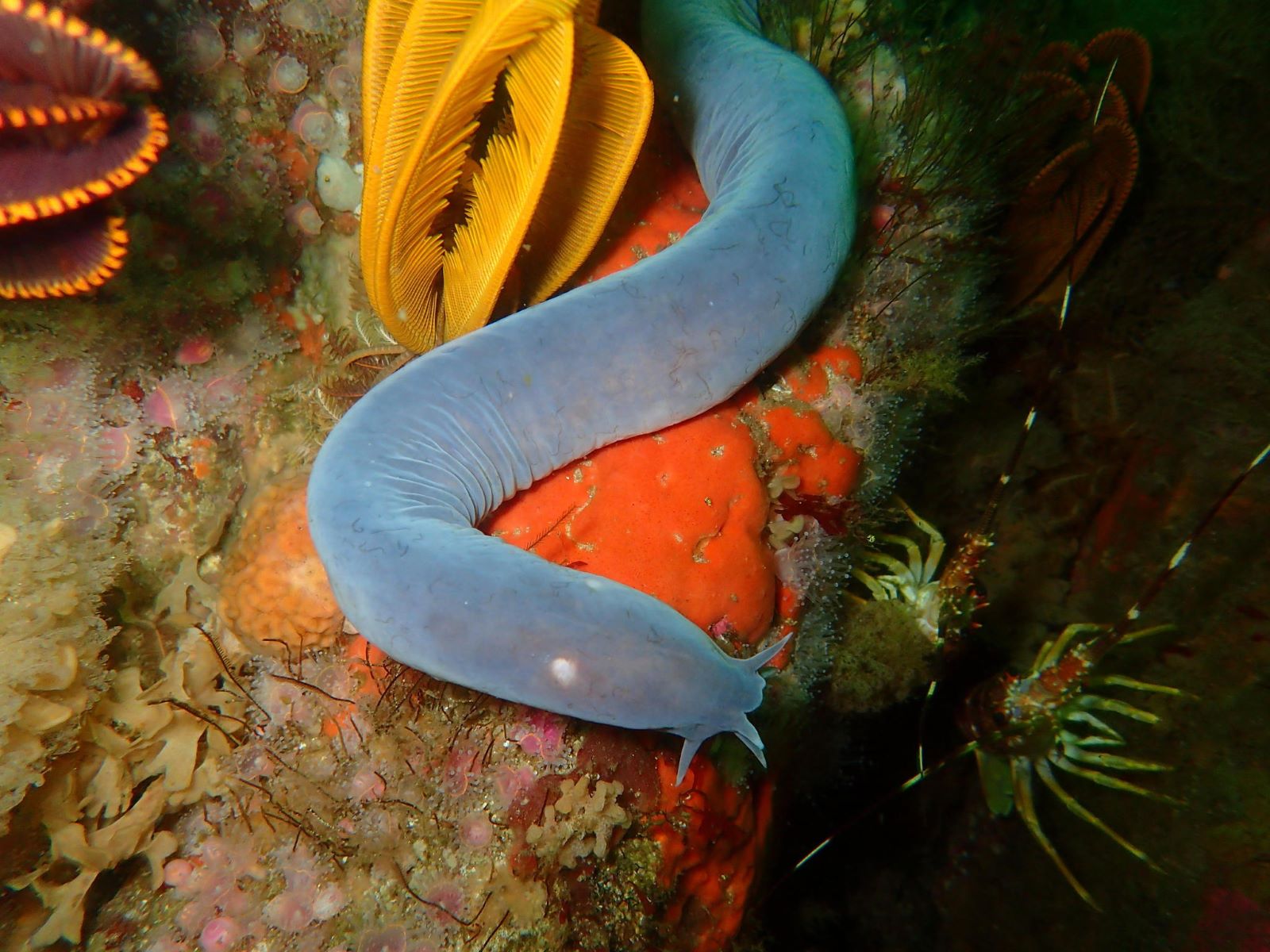Secrets Of Hagfish Habitats In Deep Sea Canyons

Have you ever wondered where hagfish live? These slimy creatures thrive in the mysterious depths of the ocean, often found in deep sea canyons. Unlike many marine animals, hagfish prefer dark, cold waters far below the surface. They burrow into the soft seabed, creating cozy homes for themselves. This unique habitat provides them with plenty of food and protection from predators. Hagfish play a crucial role in the ocean's ecosystem by cleaning up dead and decaying matter. Understanding their habitat helps scientists learn more about the deep sea and its many hidden secrets. Dive in to discover more about these fascinating creatures and their underwater world.
What Are Hagfish?
Hagfish are fascinating creatures that live in the deep sea. Known for their eel-like bodies and ability to produce slime, these animals play a crucial role in their ecosystems. Let's dive into the secrets of their habitats in deep sea canyons.
Why Deep Sea Canyons?
Deep sea canyons provide the perfect environment for hagfish. These underwater valleys offer shelter, food, and a unique ecosystem. Here are some of the most intriguing deep sea canyons where hagfish thrive:
Monterey Canyon, USA
- Located off the coast of California, Monterey Canyon is one of the deepest underwater canyons in the world. Its diverse marine life includes a significant population of hagfish. The canyon's complex terrain offers numerous hiding spots and abundant food sources.
Scripps Canyon, USA
- Found near San Diego, Scripps Canyon is another hotspot for hagfish. The steep walls and narrow passages create a labyrinthine habitat perfect for these slimy creatures. Researchers often study this area to understand hagfish behavior and ecology.
Kaikoura Canyon, New Zealand
- This canyon is famous for its rich biodiversity. Kaikoura Canyon's deep waters and nutrient-rich currents support a thriving hagfish population. The unique conditions here make it an ideal location for studying deep-sea life.
How Do Hagfish Survive?
Hagfish have several adaptations that help them survive in these harsh environments. Their ability to produce slime deters predators, while their keen sense of smell helps them locate food. Let's look at some specific adaptations:
Slime Production
- Hagfish can produce large amounts of slime when threatened. This slime clogs the gills of predators, making it difficult for them to breathe. It's an effective defense mechanism that ensures their survival.
Keen Sense of Smell
- In the dark depths of the ocean, vision is limited. Hagfish rely on their acute sense of smell to find food. They can detect decaying matter from great distances, allowing them to locate meals in the vast, dark ocean.
Flexible Bodies
- Their flexible, eel-like bodies allow hagfish to navigate the complex terrain of deep sea canyons. They can squeeze into tight spaces to escape predators or find food, making them well-suited for life in these environments.
What Do Hagfish Eat?
Hagfish are scavengers, feeding on dead and decaying matter. This diet plays a vital role in the ecosystem by recycling nutrients. Here are some common food sources for hagfish:
Dead Fish
- When a fish dies and sinks to the ocean floor, hagfish are often the first to arrive. They burrow into the carcass, consuming it from the inside out. This behavior helps break down the dead matter and recycle nutrients.
Marine Mammal Carcasses
- Larger carcasses, like those of whales or seals, also attract hagfish. These animals can feed on a single carcass for weeks, providing a steady food source in the deep sea.
Organic Debris
- Hagfish also consume smaller organic debris that falls to the ocean floor. This includes plant matter, smaller dead animals, and other detritus. Their scavenging helps keep the ocean floor clean and nutrient-rich.
Why Study Hagfish?
Studying hagfish provides valuable insights into deep-sea ecosystems. Their unique adaptations and behaviors offer clues about life in extreme environments. Here are some reasons why scientists focus on hagfish research:
Understanding Deep-Sea Ecosystems
- Hagfish are an integral part of deep-sea ecosystems. By studying them, scientists can learn more about the complex interactions between species and their environment.
Biomimicry Potential
- The slime produced by hagfish has potential applications in materials science. Researchers are exploring ways to mimic this slime for use in medical devices, biodegradable plastics, and other innovative materials.
Evolutionary Insights
- Hagfish are among the most primitive vertebrates. Studying their biology and genetics can provide insights into the early evolution of vertebrates, helping scientists understand the origins of more complex life forms.
The Hidden World of Hagfish
Hagfish are fascinating creatures living in the deep sea canyons. These slimy animals play a crucial role in the ocean's ecosystem. They help clean the ocean floor by eating dead and decaying matter. Their unique ability to produce slime protects them from predators.
Exploring their habitats reveals how they adapt to extreme conditions. The deep sea is a challenging environment, but hagfish have evolved to thrive there. Their habitats are often dark, cold, and under high pressure. Despite these harsh conditions, hagfish continue to survive and contribute to the ocean's health.
Understanding hagfish and their habitats helps scientists learn more about marine life. It also highlights the importance of preserving these unique environments. Protecting the deep sea canyons ensures that hagfish and other marine species can continue to thrive.

